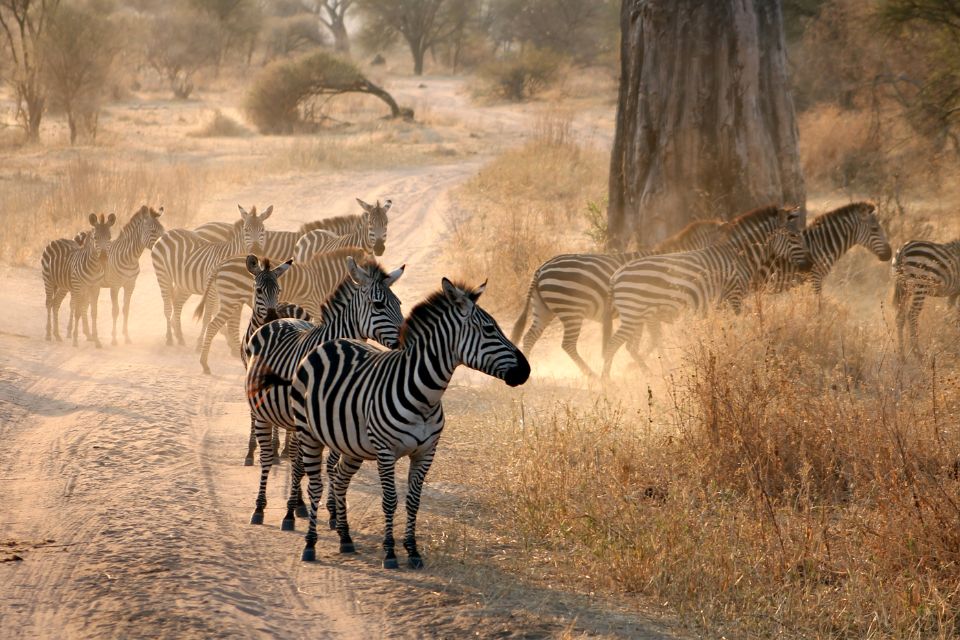Arusha National Park

Arusha National Park
Discover the hidden gem of Tanzania, Arusha National Park, where nature's wonders await. Nestled in the breathtaking Arusha Region, this park boasts diverse ecosystems and awe-inspiring views of the majestic Mt. Meru, the very crater that gives the region its name.
While many visitors use Arusha as a starting point for their northern circuit safaris, a day trip to this small but remarkable national park is not to be missed. Meet Africa Safari encompasses the slopes, summit, and ash cone of Mt. Meru, the enchanting Momela Lakes, the stunning Ngurdoto Crater, and the lush highland forests that cloak its lower slopes.
Wildlife enthusiasts will revel in the relaxed and unhurried game viewing around the Momela Lakes, while venturing into the forest offers a chance to spot the elusive colobus monkeys frolicking amidst the canopy.
For those seeking adventure, climbing Mt. Meru or exploring the lesser-known trails that criss-cross its lower slopes are popular activities in Arusha National Park. The three-day trek to the summit of the crater is an exhilarating and challenging alternative to the famous peak of Mount Kilimanjaro. On the lower slopes, hiking trails lead to rivers, waterfalls, and ancient fig tree forests, providing a tranquil and rewarding experience for nature enthusiasts. Crystal-clear mountain streams cascade through the landscape, and the opportunity to encounter colobus monkeys adds to the park's allure.
As the closest national park to Arusha town, the safari capital of northern Tanzania, Arusha National Park offers a multifaceted experience that often goes unnoticed by many safari-goers. Step through the park's entrance gate and find yourself immersed in the mystical montane forest, home to curious blue monkeys and vibrant birdlife like turacos and trogons. This is the only place on the northern safari circuit where you can easily spot the acrobatic black-and-white colobus monkeys. Within this forest lies the awe-inspiring Ngurdoto Crater, with its steep cliffs and marshy floor, inhabited by herds of buffalo and warthogs.
Venturing further north, you'll encounter rolling grassy hills that cradle the serene beauty of the Momela Lakes. Each lake boasts its unique hue of green or blue, occasionally tinged pink by thousands of flamingos. These lakes attract a rich selection of resident and migratory waterfowl, as well as graceful waterbucks displaying their magnificent lyre-shaped horns. Giraffes gracefully traverse the grassy hills, mingling with herds of grazing zebras. Watch as wide-eyed dik-diks dart into the scrubby bushes, resembling overgrown hares on spindly legs.
While elephants are not as common in Arusha National Park, and lions are absent altogether, the elusive leopards and spotted hyenas may make an appearance during the early morning or late afternoon. It is during these times that the eastern horizon's cloud cover is most likely to clear, revealing the awe-inspiring, snow-capped peaks of Kilimanjaro, a mere 50 kilometers (30 miles) away. However, it is Kilimanjaro's unassuming cousin, Mount Meru, standing at an impressive 4,566 meters (14,990 feet) as the fifth highest mountain in Africa, that dominates the park's horizon. Protected within the national park, Meru offers unparalleled views of its famous neighbor while serving as a rewarding hiking destination in its own right. The ascent of Meru takes you through wooded savannah, where encounters with buffalos and giraffes are not uncommon. As you progress, you'll traverse forests ablaze with vibrant red-hot pokers and adorned with Spanish moss, before reaching the open heathland adorned with towering.
Best Time to Visit
The best time to visit Arusha National Park is during the dry season, which typically spans from June to October and January to February. During this time, the weather is generally dry, with lower chances of rainfall. The dry season offers clear skies, making it easier to spot wildlife and enjoy unobstructed views of the park's scenic landscapes.
Additionally, the dry season corresponds with the migration of animals from surrounding areas, attracting a higher concentration of wildlife to Arusha National Park. This provides excellent opportunities for game viewing and increases the chances of witnessing spectacular wildlife interactions.
It's important to note that Arusha National Park experiences two wet seasons. The "short rains" occur from November to December, while the "long rains" typically fall between March and May. During these wet seasons, rainfall can be heavy, leading to muddy trails, reduced visibility, and some areas of the park becoming inaccessible. Wildlife may also disperse to seek water and food in different areas.
While the dry season is generally considered the best time to visit, it's worth noting that Arusha National Park is a year-round destination with unique experiences in each season. The lush greenery and abundant birdlife during the wet season can be appealing to some visitors, and there may be fewer tourists compared to the peak dry season.
Ultimately, the choice of when to visit Arusha National Park depends on personal preferences and priorities, such as weather, wildlife viewing, and crowd levels. Consulting with local experts or tour operators can provide more specific information based on your desired experiences.
Activities
- Birding
- Game Drives
- Hiking
- Canoeing
- Nature Walking
- Cultural Tours
- Picnicking
- Photography
- Wildlife Viewing
TAILOR MADE HOLIDAY
IT’S TIME FOR YOUR TAILOR-MADE DREAM HOLIDAY IN AFRICA!
Related Safari Package
Getting in touch is simpler than ever
Leave us your email address and we contact you back